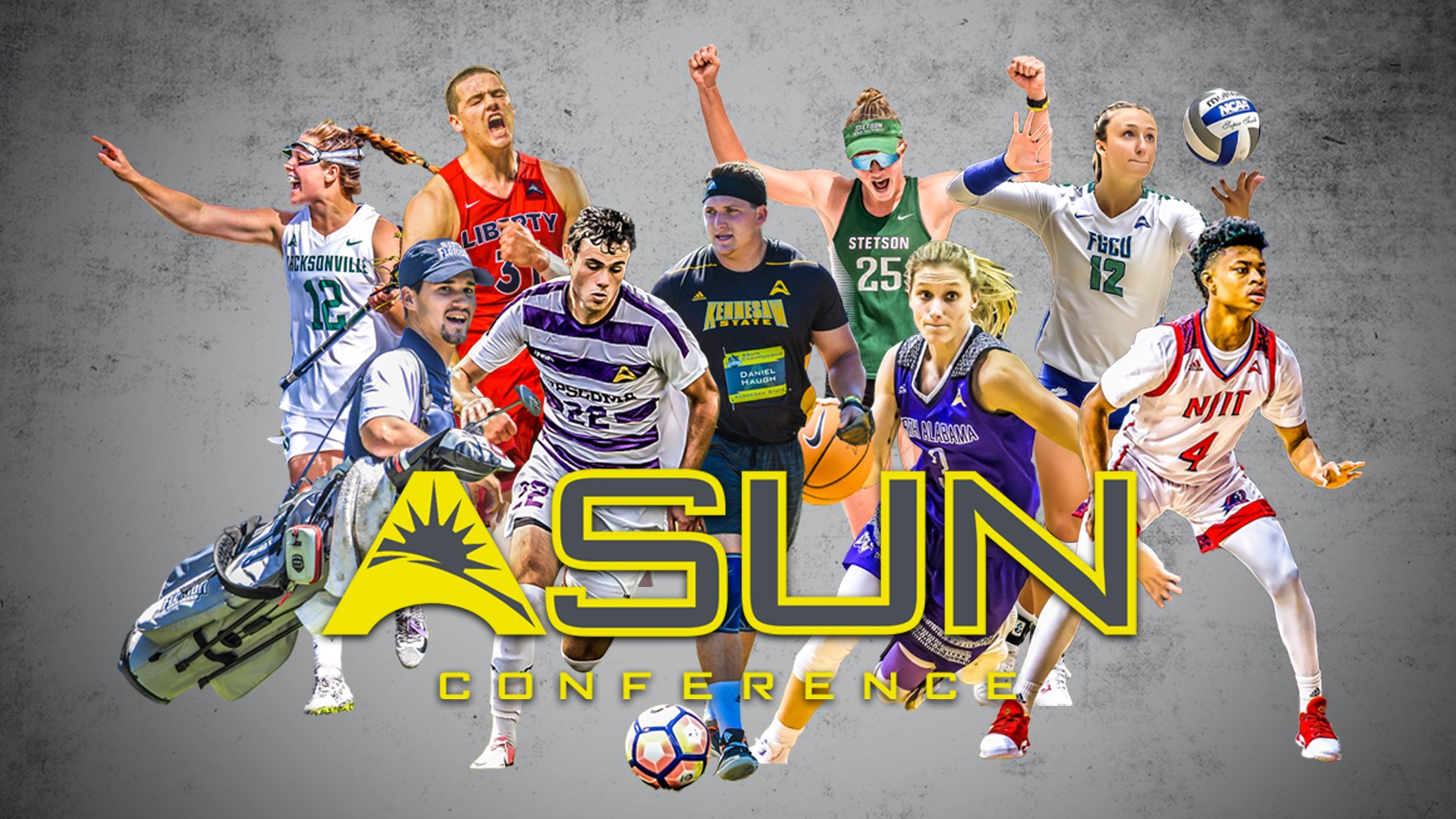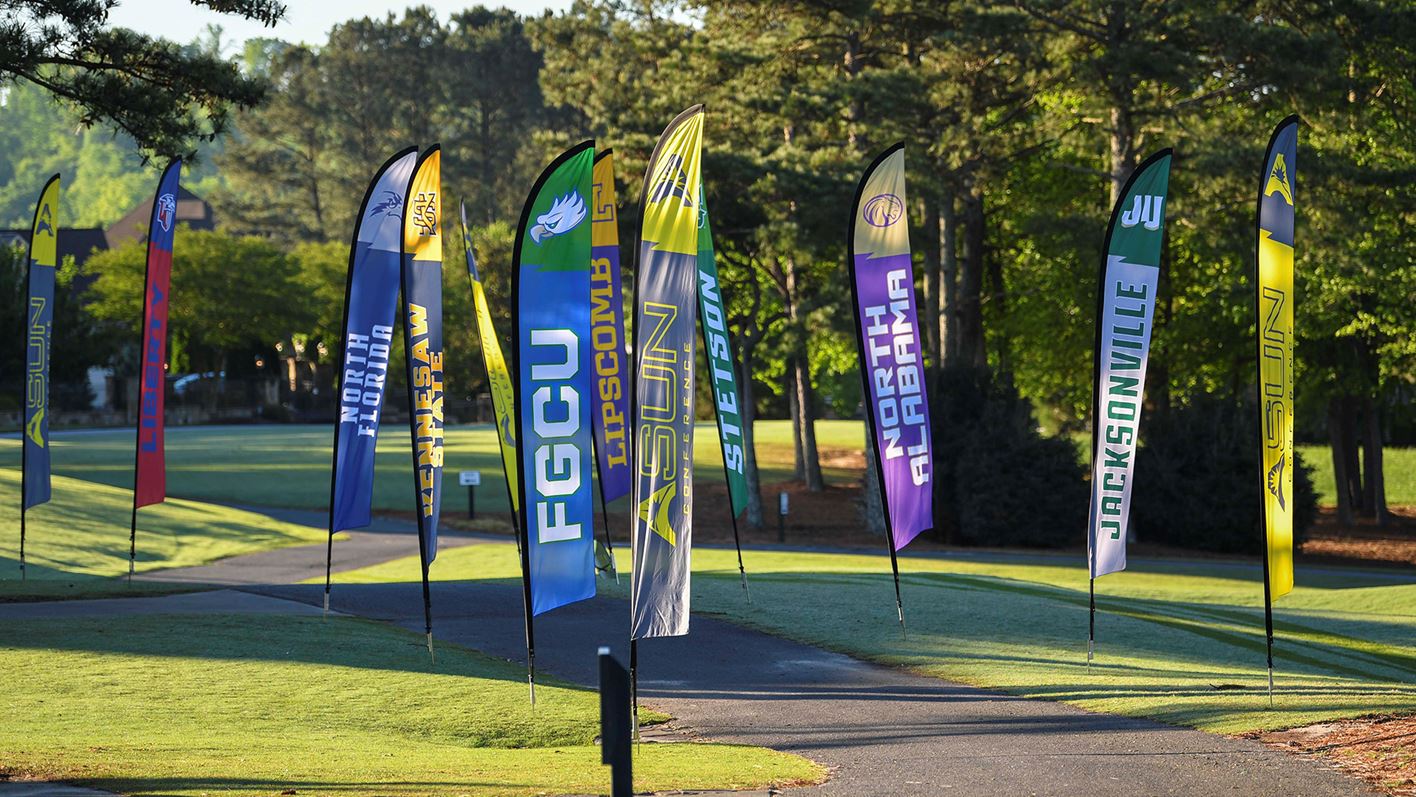
“It’s an exciting way to do this, we can support and protect each other rather than just raid each other.” – Ted Gumbart ASUN Commissioner/CCSA President
The ASUN is going in a new direction that its commissioner says will build its membership options and offer flexibility to current and hopefully new member institutions. Ted Gumbart, ASUN commission talked with CollegeAD about in essence combining with a league it already has a connection with.
Gumbart is also the president of the Coastal Collegiate Sports Association that includes colleges in men’s and women’s swimming and beach volleyball. He announced this week that seven members of the ASUN will be invited to join the CCSA in all sports effective July 1, 2023.
We researched the confidentially for a year,” he said. “As we did our research it just became apparent that we could build a conference that grew and could split into two groups. If the market dictates that there could be another football conference in the Southeast then it’s a very limited group that could provide that option and we are in a position that we could provide that option. And we would only do it if all of our members end up in a stronger position.”

“Part of it was do we want to expand the ASUN? And is there a rationale that we should go to 12 for divisional alignment because we do have a broad geographic footprint. We talked about the possibility of different schools desiring to become part of the ASUN and that one of the major dynamics was football. Another one was growth. But if you’re not a growing institution then exposure in Nashville, Jacksonville, Atlanta, South Florida, those are tremendous markets, but if those aren’t growing University that’s not where you will receive value. Our own expansion leads to those two things, growth, and accommodating football.”
Current ASUN schools Liberty, North Alabama, Stetson, and Kennesaw State have football in other conferences, and Jacksonville just dropped their program.
“During the course of discussions,” he explained, “it became apparent that football was one of the major issues we need to address. We are so proud to have a Big South partnership in football but if we can grow that total membership in football to 12 members and we could have two football leagues. That’s where we said let’s go explore the options.”
Of the current ASUN schools, Liberty is a Division I-A (or Football Bowl Subdivision) independent. North Alabama and Kennesaw State are in the Big South Conference for football, while Stetson is in the Pioneer League. The latter three are all Football Championship Subdivision (formerly I-AA) teams.
The plan is to make a legislative proposal to the NCAA membership to recognize the CCSA as a “core conference.” If that happens, then the CCSA would be eligible for automatic qualification for NCAA championships, and that opens the door for expansion, which also is part of the plan.

And the expansion could go as high as a total of 20 schools, but Gumbart isn’t ready to name names just yet.
“We’ve deliberately and definitively stated we are not going to talk school names. But of course, that’s part of the last year’s dialogue. There is evidence in our research that the market will receive this. Not 100% sure, but enough to make this announcement.”
While he’s not 100% sure about how it will be received this past year has given him a great indication that this proposal could fill a greater need.
“We worked on this confidentially for a year so we are not just throwing it out there. We have done market research and we have reason to believe that this is a viable option and we wanted to put the NCAA on notice that this is our plan because we will not be able to execute new member agreements unless we can promise the delivery of these opportunities.” He continued, “If we can build an option in the market, then schools are free to explore and select that option. The market will determine whether or not this ultimately happens. But we have done significant research to know that this is a viable economic model, it’s a viable academic model, it’s a viable athletic model, but it has to be a viable institutional model for schools to buy-in. That means it has to serve the students and it has to serve the institution.”
He drove home the spirit in which this is being presented, one of cooperation and benefit to everyone involved, from the ASUN itself to the institutions on down to the student-athletes.
“Part of what we want to do is partner with conferences, not raid or eliminate opportunities. Eight and those schools have to come from somewhere what conference were they in? What division were they in? And we want to be sensitive to their current homes that we build a partnership with them not leave anyone at a disadvantage. We want to be sure that everyone is healthy and that everybody has a schedule.”
The proposal isn’t necessarily new in the NCAA conference landscape. Back in 2010, the Big East had 17 members, including seven that did not have Division I-A football, and eventually, those seven withdrew from the Big East and negotiated keeping the Big East name. The remaining schools, not counting Notre Dame which is an independent in football, formed the American Athletic Conference.
So, what will set this expansion apart? According to Gumbart, flexibility.
“How can we become more flexible to accommodate the student and institutional means? Rather than saying this is the conference you fit us. We want to be a more flexible opportunity. But the other side is that we just believe the conference partnerships should support and protect the opportunities. The mindset of how do we flex our opportunities to meet the needs of the schools? And if building a new conference works then there’s a lot of benefits that can come from sharing a partnership with another conference. We just want to explore the market and see if it’s time for this kind of flexible and collaborative conference existence.”

He told CollegeAD that he has not had any discussions with media partners because of potential conflicts of interest.
“Our media partners were not involved in any of these discussions. And that is appropriate because with NCAA policy involved potential conflict of interest in media negotiations and the fact that we have to protect the ASUN. That’s our primary responsibility to provide the greatest value possible to the current ASUN members, so it has not been discussed. But it will now become a topic.”
He sees the future media discussion as an opportunity for all involved.
“If we build this new conference it does not have a media deal. It does not have a sponsor contract and so we would be free agents in the marketplace which is a really good place to be right now. There could be some benefit to both conferences by having some of their joint inventory sold in aggregate. So, if you’re selling across 20 markets we might be able to realize a higher return if we just had 8 or 10. And so that is an absolute part of the added value that we hope to revive. Those discussions will also occur in the next four months. If you’re going to attract a new university they are going to want to know what’s my cost? What’s my media position? What’s the exposure my institution gets? We have to be able to provide that. We recognize that and we are prepared to do that.”
According to the conference release, the chronological steps in the plan are:
◾ASUN Conference expands to 20 members (by June 2023)
◾The ASUN transfers rights to the ASUN name and marks to the CCSA
◾The ASUN 7 join the CCSA (July 1, 2023)
◾The CCSA adopts the ASUN name as a multisport conference
◾The remaining ASUN members adopt the name United Athletic Conference
“The fact that we have now put this as a public statement that this is our goal, we are probably going to spend four months having private discussions. Schools may reach out to us, we may reach out to a few schools. So, you have to move from interesting concepts to– I would like to shape this.”
